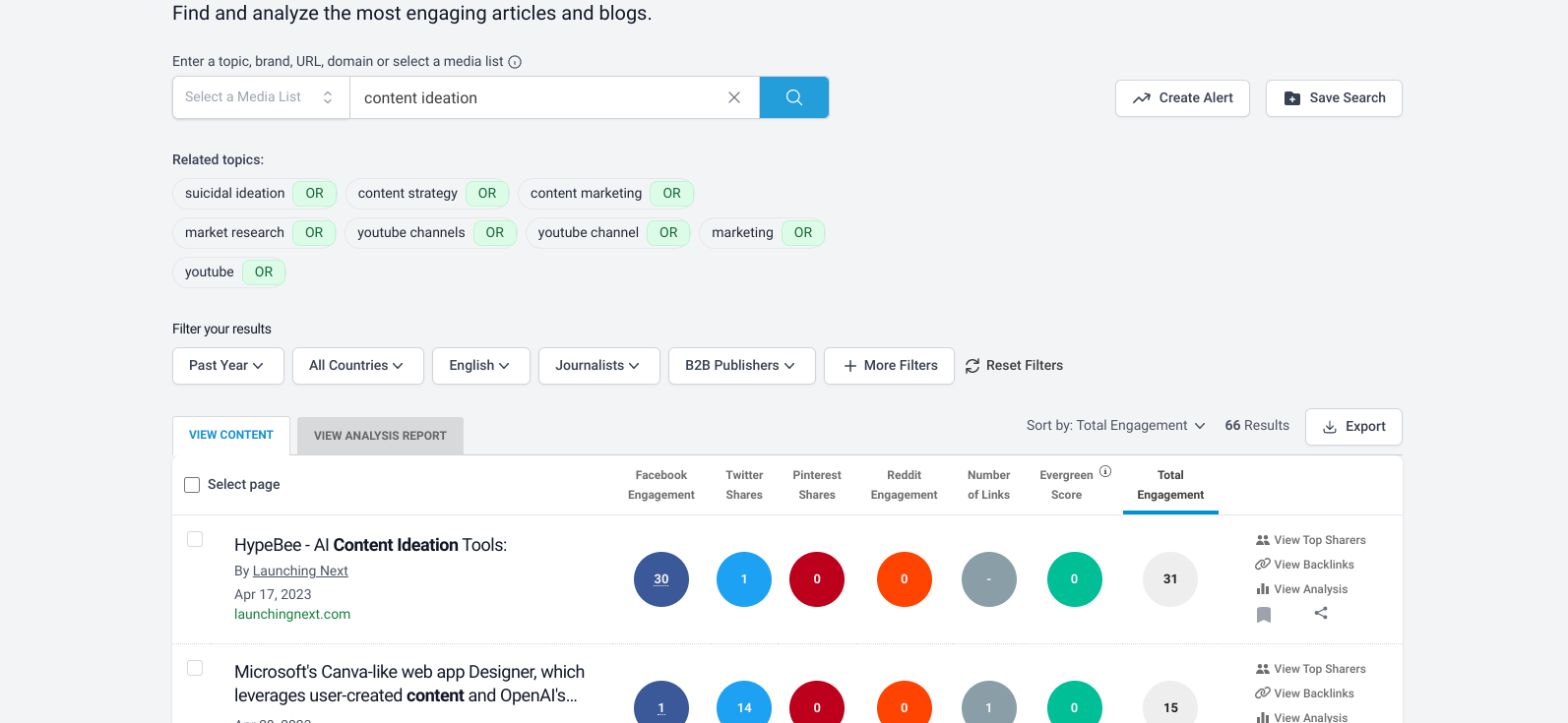Contributing to the conversation happening within your industry takes more than a simple copy and paste. Your customers chose your business because of the quality product or service you provide — the one you’ve put hours, months and years into perfecting.
Offering your expertise during conferences or through a hashtag on LinkedIn is great, but there’s so much more you can do with the power of content marketing. We’ll crack this story open with the value of content marketing, then uncover the techniques to finding content ideas and finish off on how to organize your thoughts for optimal impact.
The Importance of Content Ideation in Content Marketing
Content ideation is the process of brainstorming topics for your audience to connect with online. This could be a blog, a social media post, an email or any other branded piece of content from your company. The point is to say something worth reading and relevant to your audience’s needs.
Even in the age of TikTok, Instagram and YouTube, blogging and content writing still hold a lot of value for consumers. A business that blogs gets 55% more visitors and 434% more indexed pages according to a study by HubSpot.
There are millions of blogs on the internet today, and people love to read them. Whether readers are brushing up on the latest industry trends, researching a topic or just wasting time on their daily commute, people love blogs.
The trick is to stand out and make your content entertaining, interesting and valuable; this all starts in the content ideation stage of content creation and marketing. For this reason, you have to invest time and effort in your marketing content creation to make sure your creative sessions are productive. Integrating an employee hour tracker solution into your process can help you accurately track how much time you’re investing in creating marketing content.
Subscribe to
The Content Marketer
Get weekly insights, advice and opinions about all things digital marketing.
Thank you for subscribing to The Content Marketer!
Content Strategy in Marketing
To succeed in content marketing you need a plan or strategy. Writing in the dark is great for a personal journal but not for your business’ website. The right content strategy can take your content idea and bring it to life across multiple platforms and for many different audiences.
Your strategy should consider when and how your content will be shared and repurposed to make the greatest impact on your audience and your KPIs. The primary goals of content marketing are to:
- Gain more leads: You may be researching your customers, but they’re also researching you. High-quality content can help shoppers find the best solution (you) and encourage them to buy.
- Build trust: Customers don’t buy from just anyone — they invest in the businesses they can trust to produce results and align with their values.
- Rank on search engines: Brand awareness can help boost customer loyalty, and it starts with how you appear on search engine results pages (SERPs). The better you’re able to answer customer questions, the more likely you are to rank higher on SERPs.
- Increase marketing ROI: Content helps people find your website and offerings organically — without having to put as many advertising dollars into promoting your product or service.
Now you know why you need content marketing; but how exactly do you get started?
Simple: With an idea.
Finding Content Ideas: Techniques and Tools
The barrier that all creatives encounter is coming up with the next idea. (And the next one… and the next one…). Here are a few resources that should act as your compass:
- Competitive research: What conversations are being had within your industry and among your customers? Notice if your competitors are already talking about this subject and if they’re missing an important piece of information. If they are, fill that gap.
- Buyer personas: Who are your customers? Dive into who your best clients are and what makes them tick. Understanding their pain points throughout the sales funnel can help you come up with helpful content topics to encourage the buying process.
- SEO keyword research: Once you understand what’s happening in the industry and among your customers, do keyword research to uncover the best words and phrases to target as you write the content.
- Google trends: You can track trending topics and searches on Google to keep up to date on what’s popular. You’ll also gain an understanding of the seasonality of certain keywords.
- Content ideation tools: A research tool like Buzzsumo can help you understand the most searched and shared content for any keyword. You can pick up on any trending topics based on the medium it was shared on.

More Techniques to Try
Collaboration could also count as a topic ideation tool. You never know what insight your coworkers have locked away that could be your next big idea.
Brainstorming
Many creatives such as musicians and authors will lock themselves away for a weekend or for several days to come up with their next idea. Instead of becoming a recluse, though, you could work with your fellow writers to build on each other’s ideas. Brainstorming content involves a dedicated, structured process of coming up with ideas.
Method 6-3-5
Similar to brainstorming, you can take 6 people into a room, and have them write down 3 ideas in 5 minutes. When the 5 minutes are up, you’ll pass the paper over to the person next to you to build off of that idea. This is a silent exercise until everyone has touched on each topic and a full-fledged content topic has come forth.
Learn to Read Your Readers: Understanding Search Intent
When coming up with things to say to your audience, new content ideas could position you as a leader in the industry. Your platform should be a place that customers can turn to for excellent service and products, as well as a valuable resource.
The content marketing ideation process is based on customers’ search intent or their main goal of typing a query into a search engine. As you uncover your next topic idea, consider if the audience member is looking to learn, consider or buy. The closer your piece of content matches the user’s intent, the greater the ranking on the SERP.
It’s important to frame your idea generation with your audience rather than Google, but search intent is indeed the search engine’s primary focus and the reason why marketers are focused on SEO content.
Organizing Content Ideas
After your brainstorming and deep research sessions, you may have a dozen ideas that could really connect with your audience. The next step is to take a step back. Yep! Take a little walk, grab lunch or work on something else for a while so that you can clear your mind and come to the topics with fresh eyes.
Next is to organize your ideas based on where in the funnel they would best serve your customers. Are they doing research or well-informed and ready to make a decision?
There isn’t necessarily a secret sauce to developing a new content marketing strategy, it just takes time, collaboration and understanding of what’s most important.





